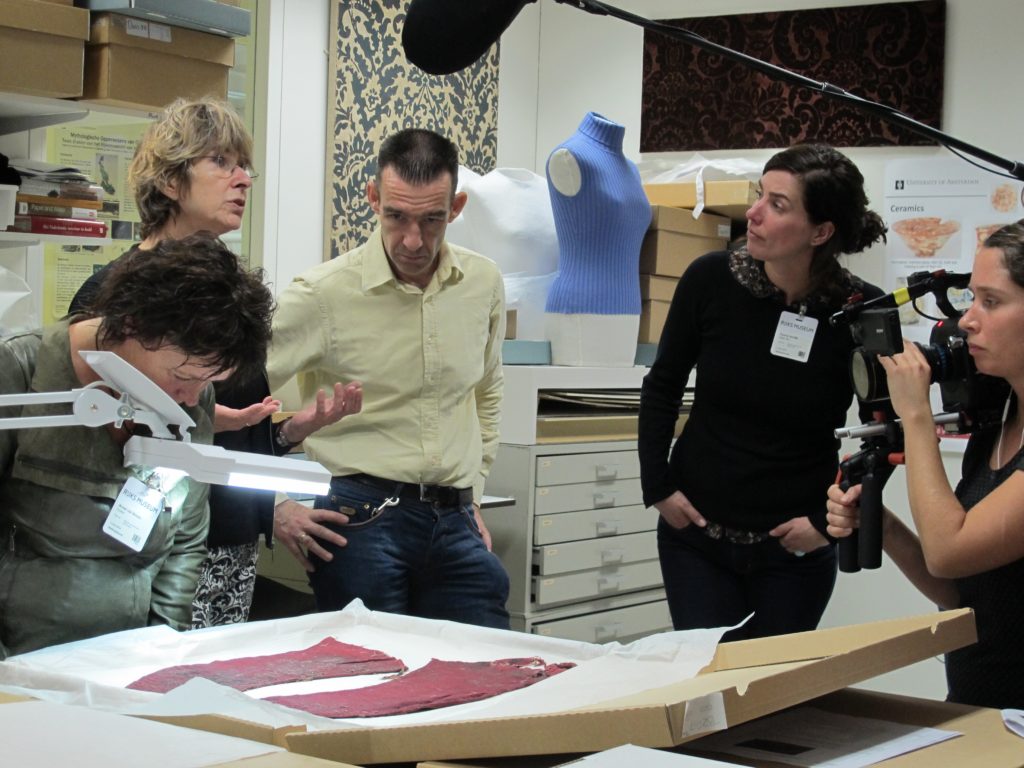
Netherlands
Musealization of rare and clandestine textiles from Texel’s Palmwood Wreck
Corina Hordijk & Alec Ewing (Museum Kaap Skil)
Museum Kaap Skil is located in Oudeschild, on the island of Texel –just a stone’s throw away from the Waddensea and the site of the historical Texel Roads. The museum’s foundations are the island’s deeply rooted maritime culture and the local desire during the 1970s to educate the growing number of tourists on the unique history of an island surrounded by the world’s seas. Through truly local effort, a makeshift museum was realized in 1980, with temporary exhibitions by local historians, spectacular flotsam and jetsam collections as well as wreck finds by local divers.
This proved to be a remarkable success with tourists and island inhabitants alike, in part through a seemingly novel form of archaeology and historical story telling: scuba diving. This first made its appearance on Texel in the 1970s, especially within the island’s large fishermen community: men who had been trawling the local waters for years and who knew that ‘something’ had to be down there.
What they found was a whole new world beneath the surface of the water, as well as several ‘virgin’ wrecks from which anything and everything could be and was salvaged. In the Western Waddensea especially, these were wrecks of mostly 17th and 18th century Dutch merchantmen, some of which were remarkably intact and filled with both everyday and highly exotic cargo. These very tangible discoveries brought about a renewed awareness of the Texel Roads – a massive roadstead all along the eastern coastline of Texel, the key logistical hub of Holland’s maritime heyday that brought trade routes from all corners of the world together.
In the decades that followed, both the Texel Roads and maritime archaeology became key components of the museum’s identity and public outreach, but also a source of considerable museological and archaeological controversy. Divers operating outside legal frameworks, shifting governmental policies and priorities, financing, legal ownership and proper heritage management have been recurring issues that have sometimes boiled over.
In 2014 this again came to a head when divers salvaged what the museum believes to be one of the most remarkable and vulnerable cargoes ever found. In what was locally dubbed the Palmwood Wreck, several chests were found carrying what might be the personal belongings of an extremely wealthy family from the middle of the 17th century. Several chests were filled with garments and other textiles – including gorgeous satin gowns and eastern robes, lavishly decorated with rich dyes and silver and gold accessories. Others contained dozens of ornately worked silver and gilt objects, and even gold-embossed book covers. A collection that, in short, provides an intimate view of a wealthy, stylish and cosmopolitan 17th-century existence. And though the textiles were seemingly remarkably well preserved, some of which were still brightly shining with vibrant red colours, it was also evident that these were extremely fragile.
In this talk, Artistic Director Corina Hordijk and Curator Alec Ewing will discuss the necessary steps taken with Texel’s divers and the local, provincial and national governmental agencies to settle the controversies surrounding this collection. This includes the questions of ownership and finances, the research collaborations that followed and the museological and practical hurdles brought about by the desire to permanently display such a controversial and vulnerable group of objects in Museum Kaap Skil.
